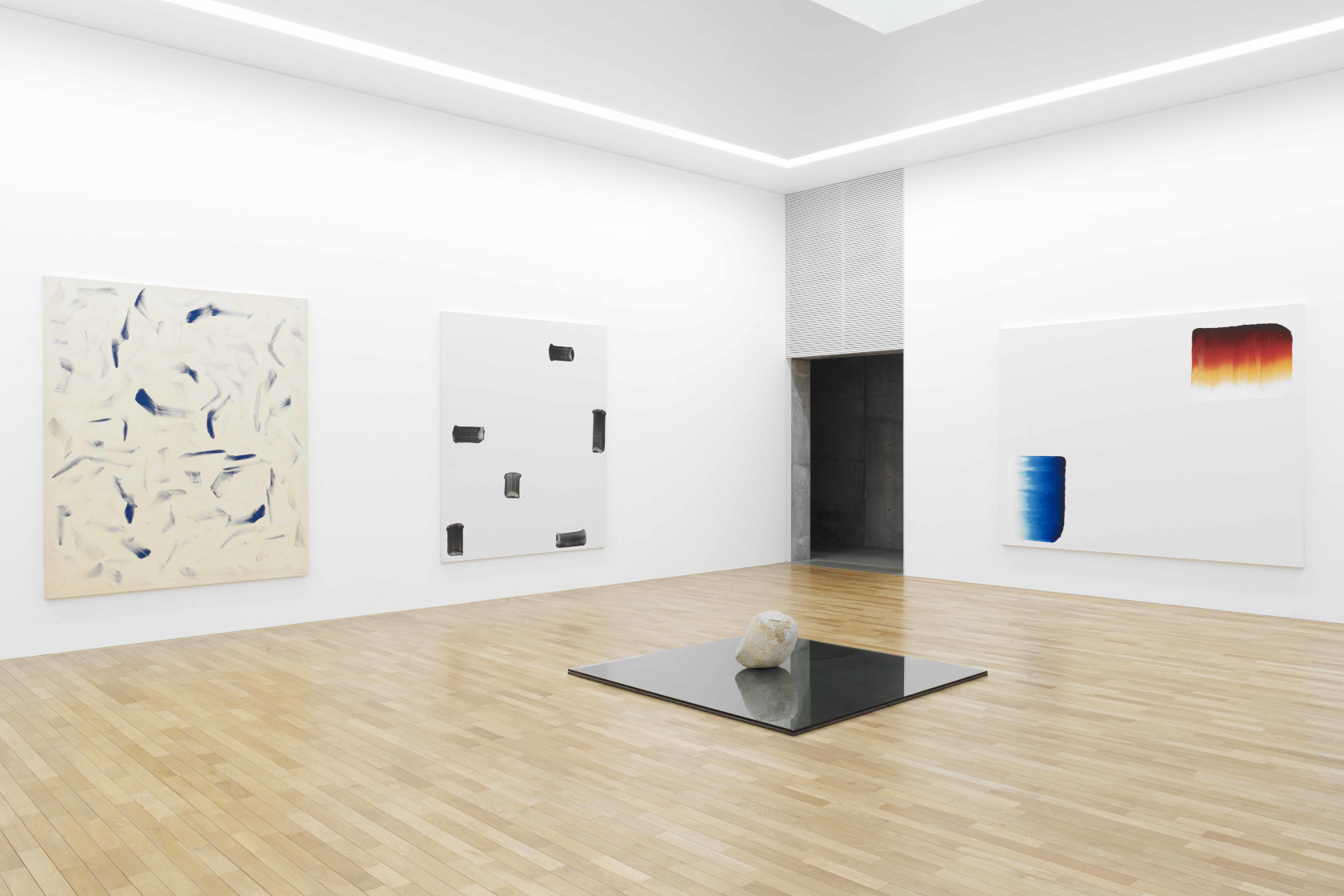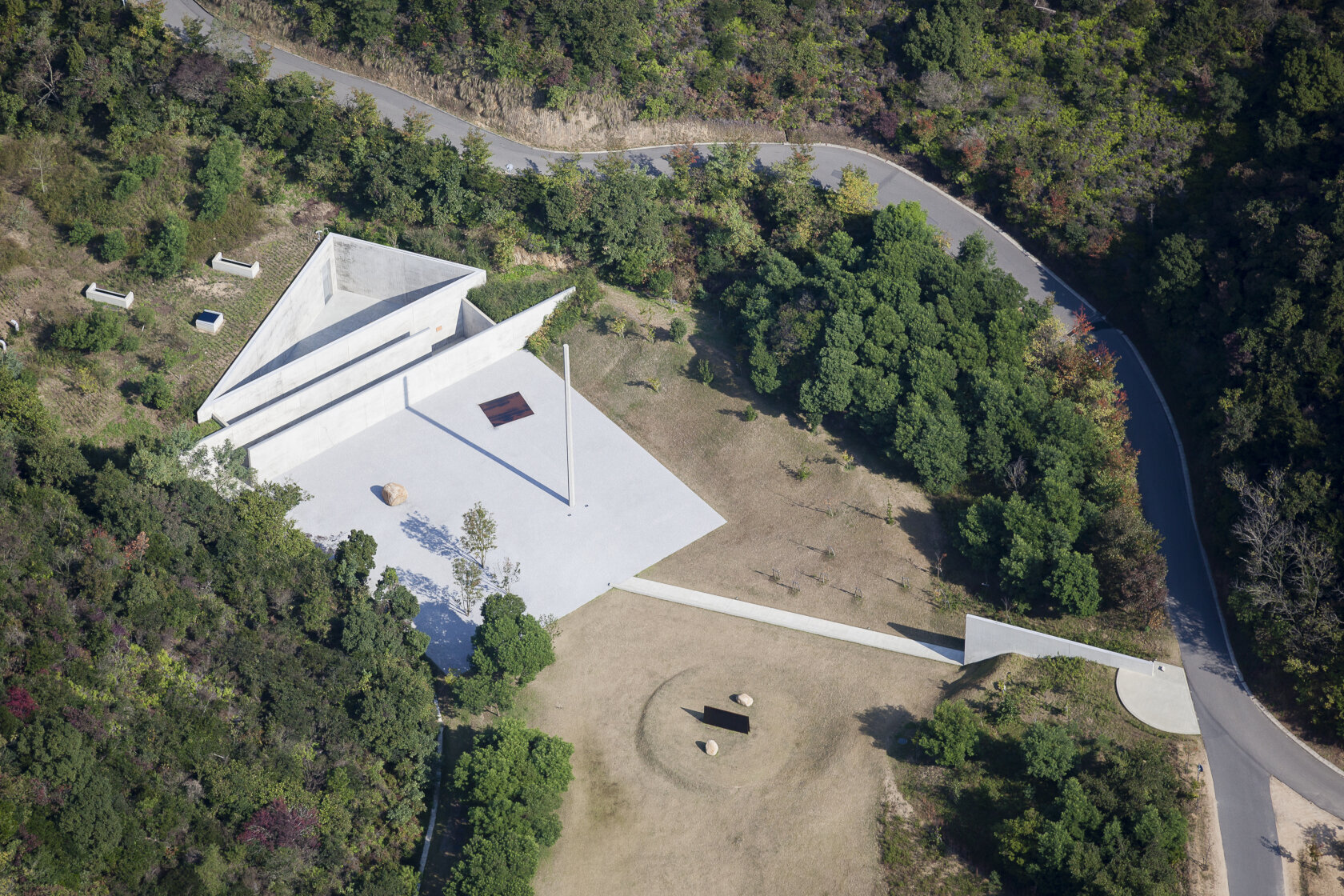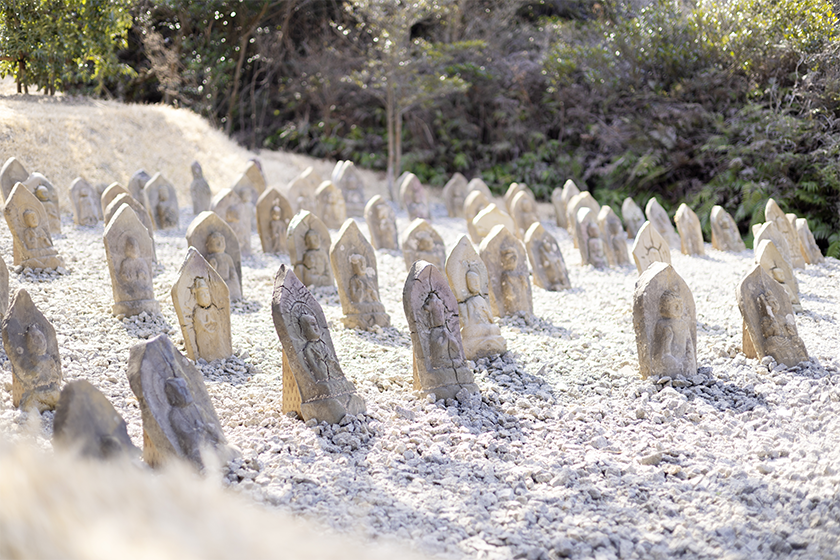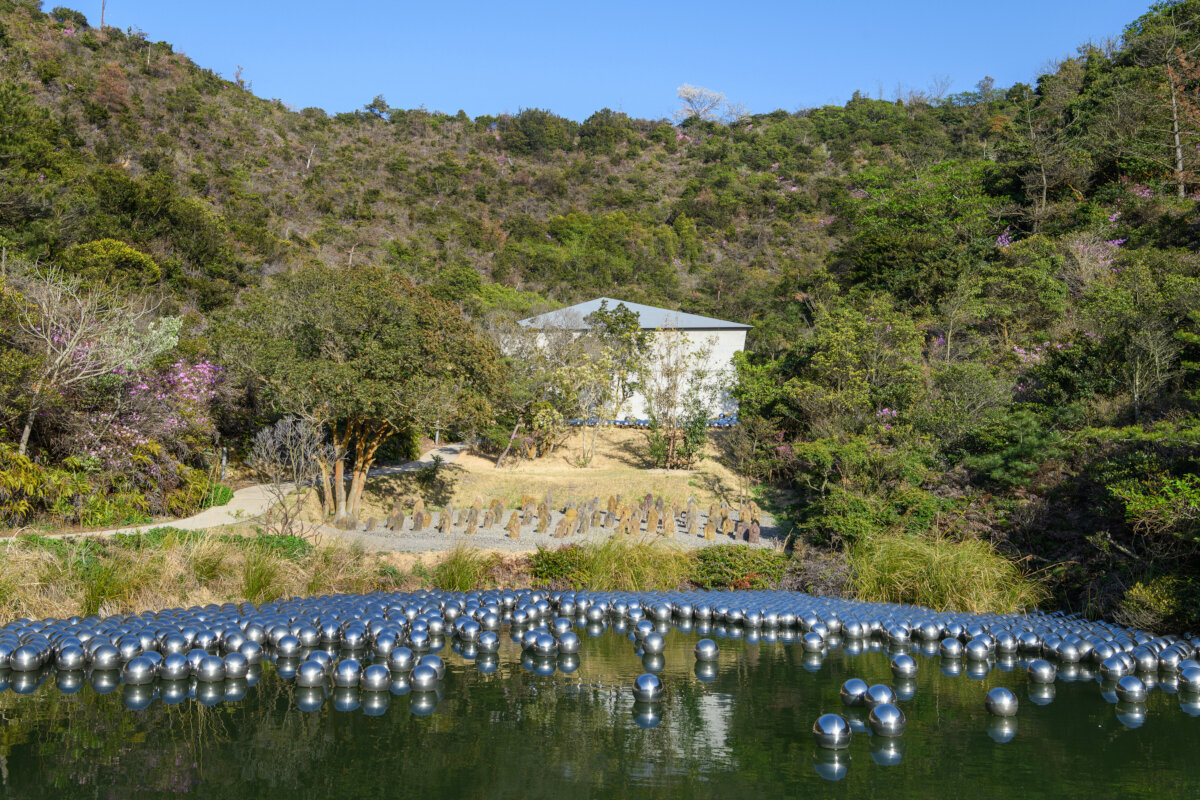Hiroshi Sugimoto: "Art is the last source of inspiration left to humanity" (#2)
From the reconstruction of Go'o Shrine to architecture and the Enoura Observatory
By 2001 Sugimoto had contracted hepatitis C and was forced to confront the idea of his own death. These were the circumstances in which he undertook the rebuilding of the Go'o Shrine.
Go'o Shrine is thought to have been constructed on its present site in the seventeenth century to protect the back entrance of Takahara Castle, which was itself built by Takahara Tsugitoshi, the lord of a small maritime clan. The shrine was in such a poor state that the worship hall had collapsed around 2000. As part of the Art House Project, a project in which artists turn the living spaces of empty houses on Naoshima into works of art, it was decided to restore the shrine. The commission was entrusted to Sugimoto.
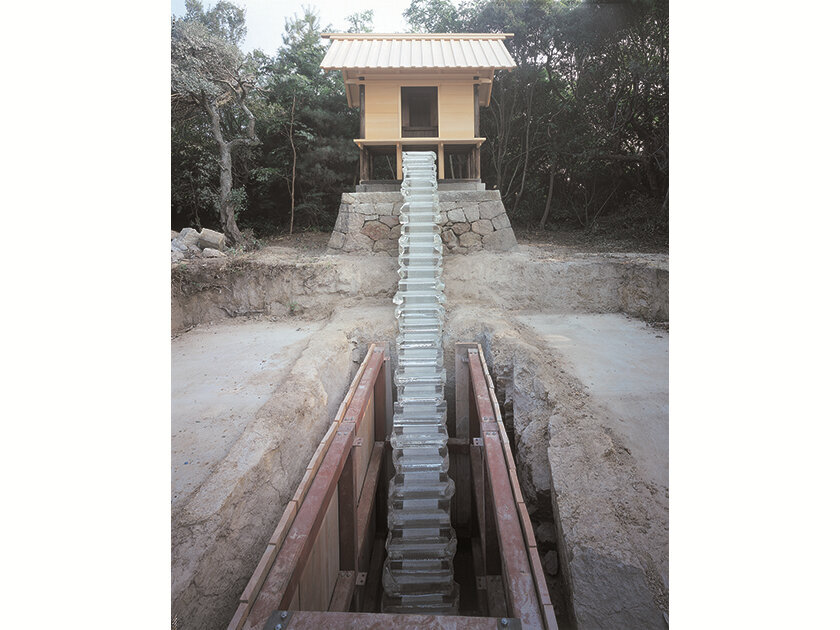
Sugimoto came up with the concept of a tumulus-like underground chamber connected by light to the above-ground shrine. It was based on notions of "appropriate proportion" for a space where a god would reside and incorporated diverse elements from ancient Shinto. In the process of the project, which was at once a work of art and the physical reconstruction of a shrine for the benefit of the local people and their history, Sugimoto got over his hepatitis. The experience prompted him to take up architecture in a serious way and in 2008 he established his own architectural practice, the New Material Research Laboratory (SHINSOKEN), with its philosophy that "the oldest materials are the newest." Sugimoto proposed constructing a shrine approach on the neighboring island as a next step. His bold concept of an approach consisting of a 100-meter-long single-lane purification pool wide enough for one person to swim along was never realized. Nonetheless, Sugimoto ended up building a version of it for himself at the Odawara Art Foundation's Enoura Observatory, in part prompted by a suggestion from Soichiro Fukutake, the former president of Benesse Art Site Naoshima. Ultimately, the basic concept of the purification pool became a magnificent reality in the form of the Summer Solstice Light Worship 100-meter Gallery.


Meanwhile, an exhibit inspired by the idea of a "space for the repose of souls" was set up in the foyer space of Benesse House Park, a hotel in Naoshima completed in 2006. This comprised Sugimoto's Pine Trees, a quotation of a famous work by Momoyama period painter Hasegawa Tohaku recreated in the form of a photograph of pines in the Imperial Palace in Tokyo and black-and-white images from his "Architecture" series: Church of the Light (a church near Osaka designed by Ando Tadao) and World Trade Center, etc. Ultimately, this exhibit became the origin of Hiroshi Sugimoto Gallery: Time Corridors.
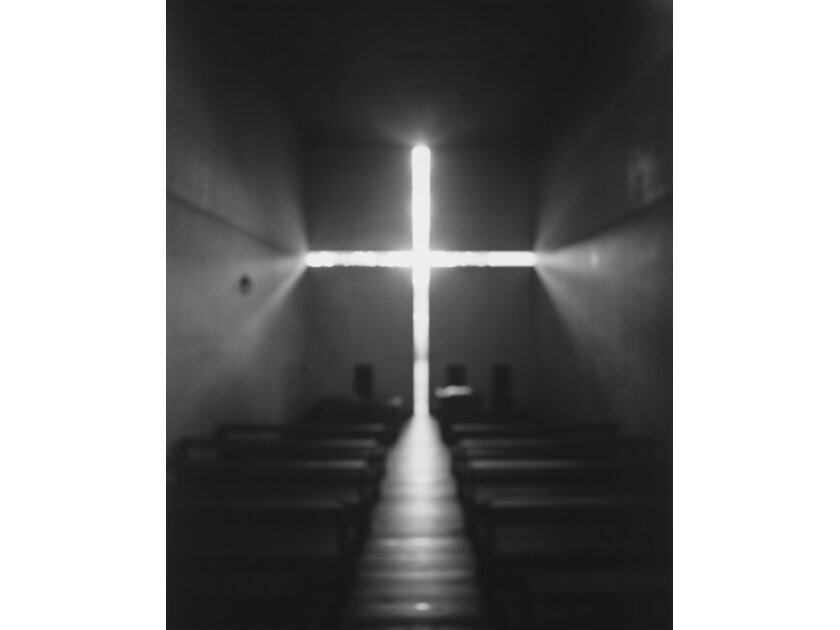
Incidentally, the redesign of the gallery from the foyer was started by an opportunity when part of a scale model of Naoshima was exhibited in Tadao Ando: The Challenge, a 2018 exhibition at The Centre Pompidou in Paris. When Soichiro Fukutake went to Paris to see the exhibition, he dropped in on Sugimoto, who was busy setting up his solo exhibition at the Palace of Versailles. This gave the two men the opportunity to have a meeting inside the Glass Tea House "Mondrian," which was one of the Versailles exhibits.
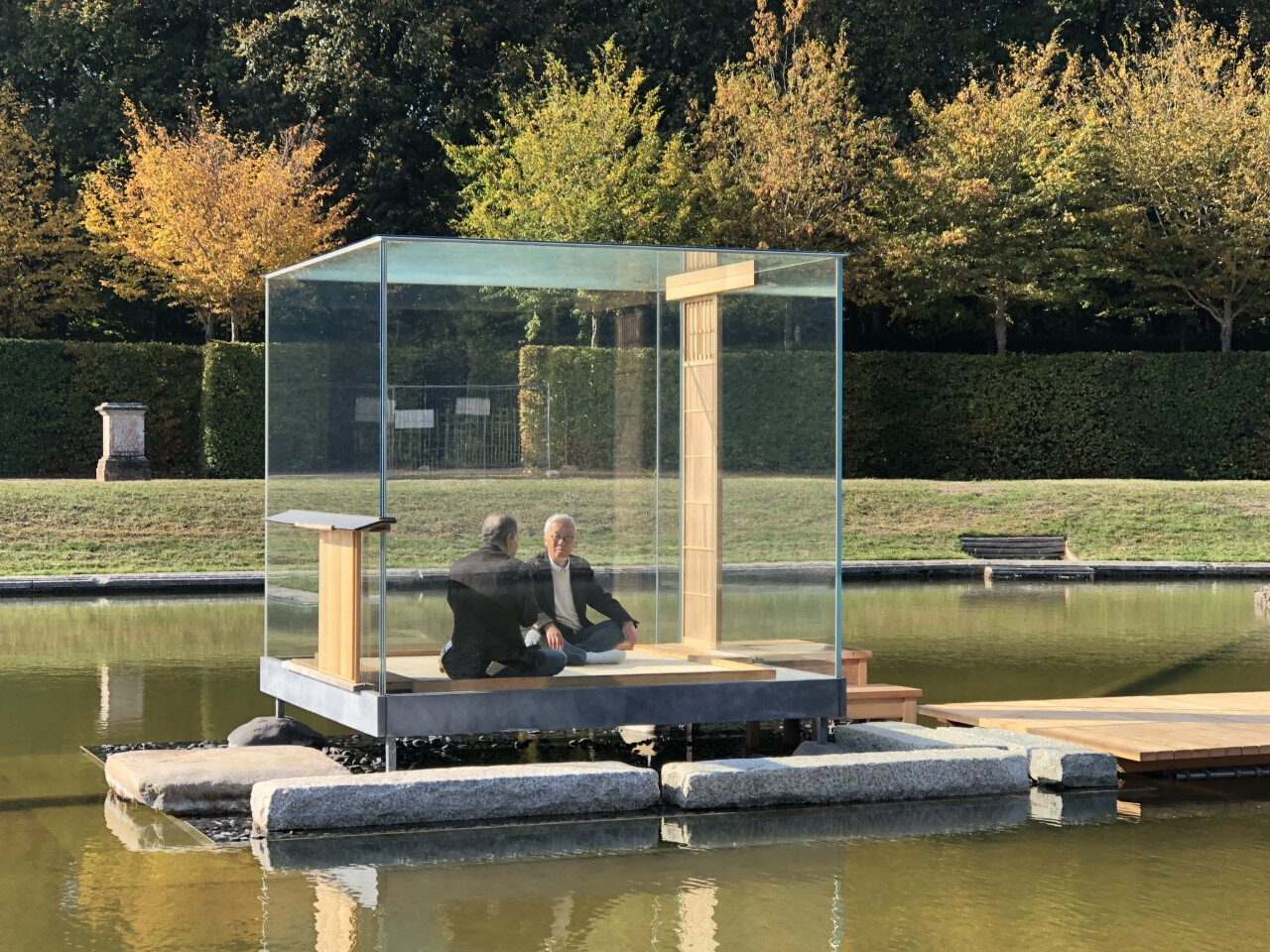
Once again, through the workings of karma, it was Naoshima that ended up becoming the final home of the Glass Tea House "Mondrian", enabling Sugimoto to deepen his dialogue with nature and the physical experience of time through a broad range of works on the island.
New themes: The aesthetics of decay and resurrection, the last days, and death
Taking a fresh look back on Sugimoto's artistic activity, one sees that it is not until the 2000s that his work really starts to diversify and broaden, whether that means "remakes" of past series and variations such as his "Five Elements," or exhibitions that combine large numbers of his own works with antiquities, which, according to him, "my alter-ego collected out of absolute necessity in order to learn something, to absorb the nutrients and to reconvert it into art."*1
Although his vigorous level of activity gave the impression of someone rejoicing in his conquest of disease and rebirth, his large-scale solo exhibitions, which proliferated from this point, took for their themes the aesthetics of decay and resurrection, the last days, and death.
Aujourd'hui, le Monde est mort ["Lost Human Genetic Archive"], a solo exhibition which the author organized at the Palais de Tokyo in Paris, was the first large-scale attempt to grasp the full scope of Sugimoto's work as it evolved into Gesamtkunstwerk. A dense reflection of Sugimoto's personal experience, the exhibition included homages to photographic pioneer Henry Fox Talbot, tea master Sen no Rikyu and artist Marcel Duchamp. It also hinted at his creative state and the multiple directions in which it was heading as he moved beyond the white cube space to develop his scientific, religious and artistic interests out of his imaginings.

The Palais de Tokyo opened as a palace of modern art in time for the 1937 Paris Exposition internationale and it was there, famously, that Picasso's Guernica was first exhibited. It housed a variety of institutions related to the visual arts such as the Musée national d'art moderne, Institut National de Formation aux Métiers de l'Image et du Son and Centre National de la Photographie; it was also used as a receivership warehouse for storing pillaged Jewish goods and property during World War II.
Sugimoto detected an aesthetic of decay the instant he set foot in the building, with hints of the many modifications and renovations it has undergone throughout. He immediately came up with thirty-three scenarios depicting the extinction of humanity as seen from a future vantage point.
Of particular interest to Sugimoto was Salle 37, a screening room that had only just become accessible thanks to alterations that took place just prior to the exhibition. Sealed during a previous round of modifications and forgotten for decades, the shut-off room retained the atmosphere of the period when it was built to a quite miraculous degree; it really was as if time had stood still. The room so deeply impressed Sugimoto that he resumed his "Theater" series after a ten-year hiatus. Such was the origin of his "Abandoned Theater" series.
*1. Hiroshi Sugimoto Rekishi no Rekishi New Material Research Laboratory 2008, p. 5
Returning to the origin.
What form of expression can transmit the human spirit and capabilities?
Sugimoto's conviction that we find ourselves in the "latter days of the law" (the Buddhist equivalent of the end times) probably derives from him having witnessed the catastrophic complex coordinated terror attacks in the United States in 2001, as well as natural disaster in the form of the 2011 Great East Japan Earthquake.*2 Despite that, in 2014 there was a strong tendency to dismiss as nonsense his "creation of an end of the world more real than the real thing," which questioned the gap between real and false images, addressed the fragmentation of time and attempted to model the world.
It is ironic, however, that recent events such as the Covid-19 pandemic, accelerating climate change and Russia's invasion of Ukraine now make his imaginings feel all too plausible.
Confronted by people who persist in believing the capitalist myth that endless growth guarantees human happiness, even though the concept of linear time, in which the world steadily improves, is no longer valid, by advancing destruction in the name of growth and the limit of modernity (or perhaps "the final days of progress" seen in the Buddhist nirvana), not to mention the very existence of environmentally catastrophic human race, whose true nature is greed, madness and futility, what impels Sugimoto to artistic expression is to revisit the origins of his art and ask himself: "How have things turned out like this? What kind of expression can pass on the human spirit and capabilities as a memory of humanity?" It is to provoke such questions, Sugimoto says, that he creates ruins for the future or complexes evocative of the Buddhist Paradise.
At first glance, Sugimoto's art can appear to be branching out in a multiplicity of directions. In fact, though, it is all interconnected and unified through his conviction that "art is the last source of inspiration left to humanity" *3 and, because he fulfils his duty as an artist based on a grandiose sense of time and a cosmic perspective, his works nimbly transcend the whole debate of dilettantism versus art and antiquarianism versus contemporary art.
Like the sunlight refracted through the prism that sits in the Hiroshi Sugimoto Gallery: Time Corridors and reveals a spectrum of ever-changing colors, Sugimoto reveals himself to us in an infinity of different forms that change depending on all sorts of conditions, not just the angle of the light.
*2. Sugimoto and the author's joint appearance at the Yokohama Triennale press conference scheduled for 3 p.m. on 11 March 2011 was cancelled when the Great East Japan Earthquake occurred just before it was due to start. Similarly, POST VITAM, Sugimoto's 2020 exhibition at the Kyoto City KYOCERA Museum of Art (curated by the author) was postponed at the last minute due to the onset of the Covid-19 pandemic.
*3. From the Yuko Nakamura documentary Memories of Origin 2012
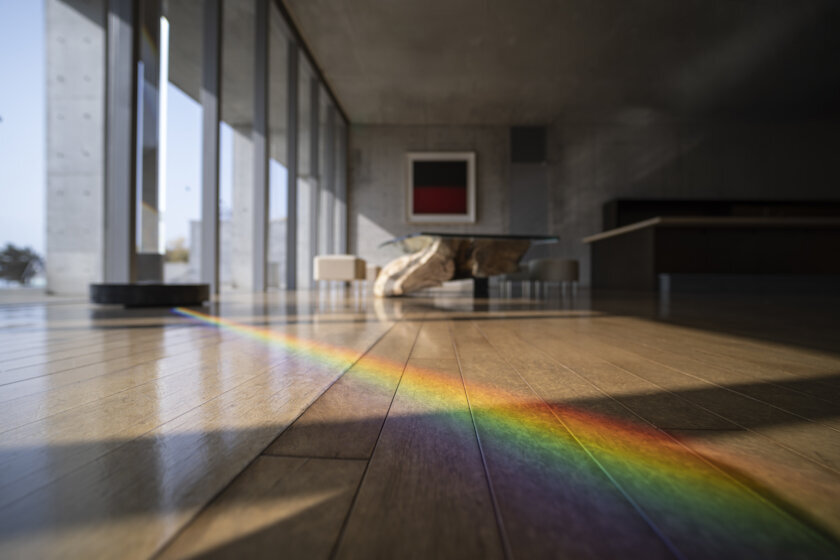

This essay includes excerpts from the following works of the author.
"The exhibition as a machine for stopping time" Cahiers d'Art, No. 1, 2014
"The beginning of the end of the world" Lost Human Genetic Archive Exhibition Catalogue, Tokyo Photographic Art Museum, 2016
"On Hiroshi Sugimoto--Post Vitam" HIROSHI SUGIMOTO POST VITAM Exhibition Catalogue, Heibonsha, 2020
"Hiroshi Sugimoto and Naoshima: The Making of Time Corridors" Hiroshi Sugimoto Gallery: Time Corridors Handbook, Benesse Holdings, 2022
Reference works
Hiroshi Sugimoto Time Exposed Shinchosha, 2005
Hiroshi Sugimoto Origin of Art Shinchosha, 2012
Hiroshi Sugimoto Enoura Kitan Iwanami Shoten, 2020
Hiroshi Sugimoto Kagero Nikki Shinchosha, 2022
Akiko MikiBenesse Art Site Naoshima International Artistic Director / Director, Naoshima New Museum of Art (Open in Spring 2025)
Former Chief and Senior curator, Palais de Tokyo (2000-2014), Co-director, Yokohama Triennale 2017 and Artistic Director of its 2011 edition among others. She was also guest curator for many large-scaled exhibitions including the ones of Japanese artists such as Nobuyoshi Araki, Hiroshi Sugimoto, Takashi Murakami at major museums in Asia and Europe as Barbican Art Gallery, Taipei Fine Art Museum, National Museum of Contemporary Art, Seoul, Mori Art Museum, Yokohama Museum of Art, and Kyoto City KYOCERA Museum of Art.

